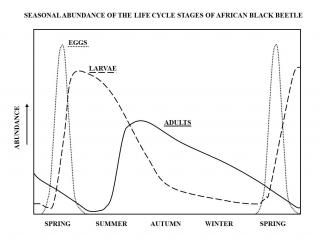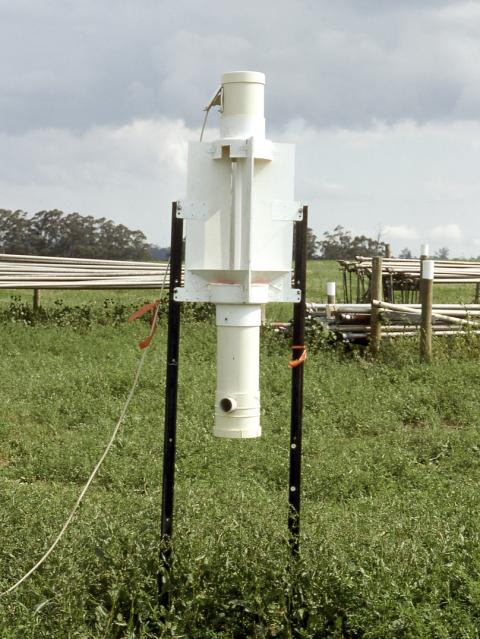Seasonal patterns
Life cycle stages
African black beetle has one generation per year. Adults are present during winter. Any larvae seen during winter are late developers from the previous summer and do not survive. Adult beetles mate in spring and lay eggs under the soil surface.
Adult numbers decline in spring as the old generation dies off, and larvae develop during late spring to summer. Young larvae do not tolerate high soil moisture, and mortality can be high in wet spring weather. As older larvae have a high mortality rate due to the dry WA summer conditions, many do not become adults. This is unlike the eastern Australia where summer rainfall is greater and the survival rate of larvae is higher.
As with all insects, the rate of growth depends on temperature. Because of higher temperatures in northern parts of the beetle’s distribution such as around Gingin, development stages such as mating, egg-laying and abundance of larvae peak about six weeks earlier than in southern areas around Albany.
Flying and walking
The triggers for flight are not known. Weather conditions associated with summer thunderstorms seem to promote swarming flights of beetles. Most flight activity occurs in late summer-autumn, which coincides with the emergence of the new generation of adults.
Some flight activity also occurs in spring, when adults mate and lay eggs. In spring the level of crawling of adults is much greater than flight. Beetles crawl on the soil or pasture surface at night.
Large scale flights are sporadic and may be localised within a district, making them difficult to predict. Large flight events may be monitored with lights (shed/street) or an insect light trap.


